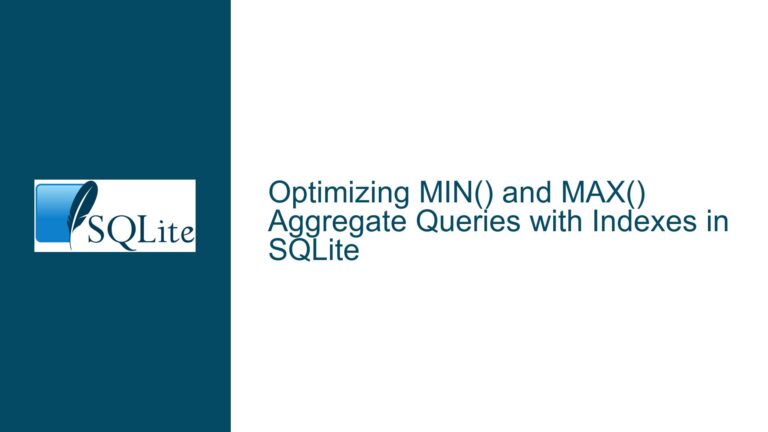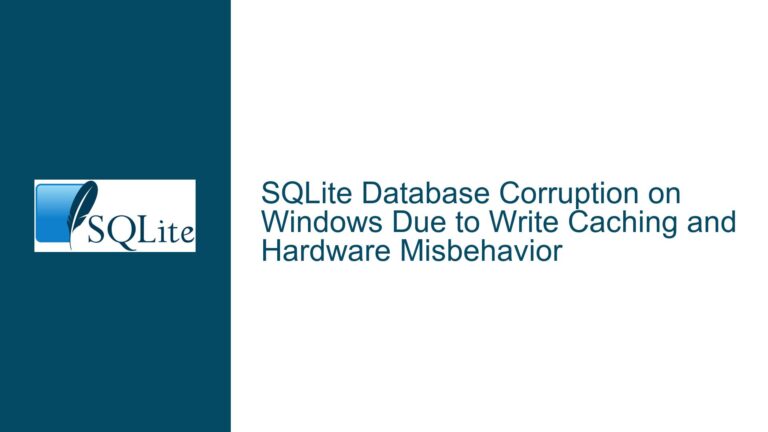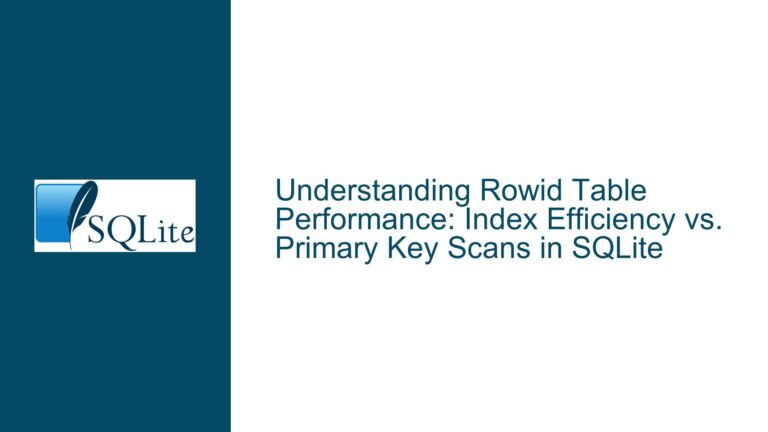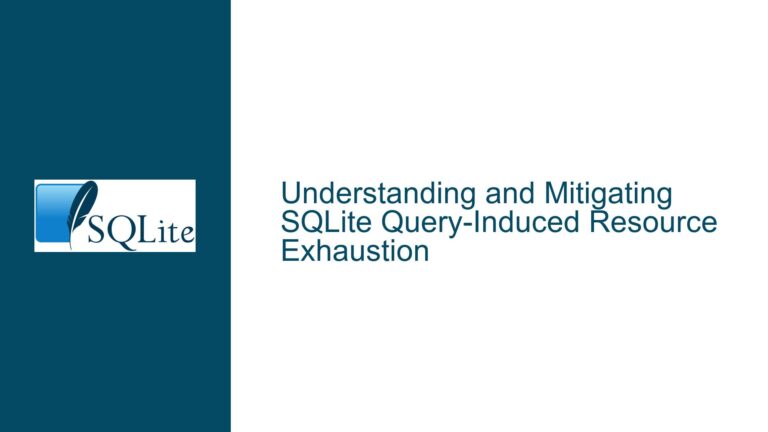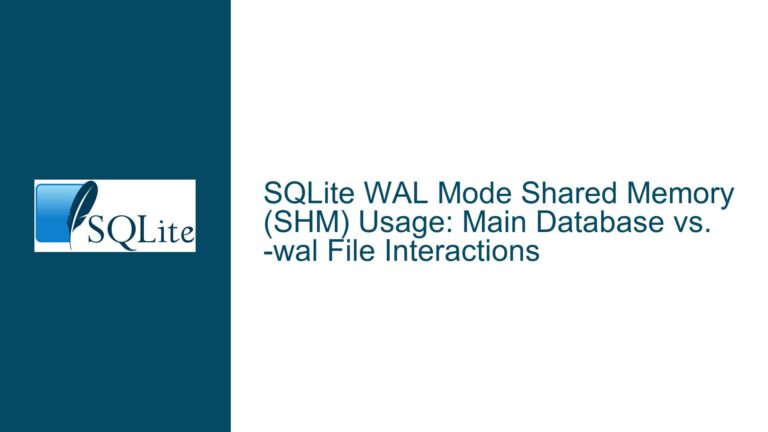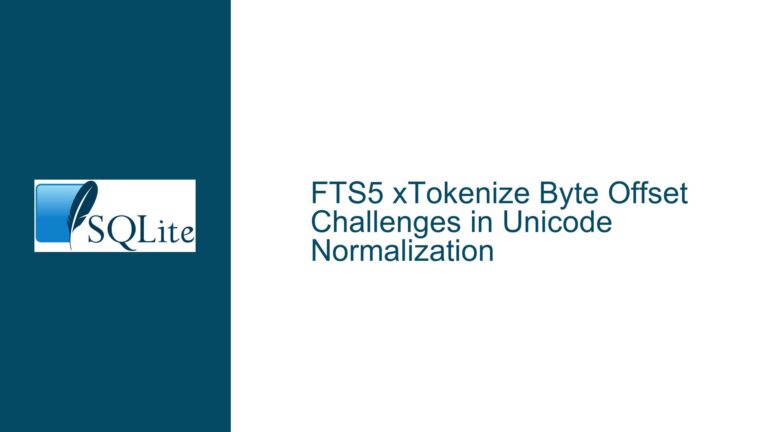Modifying SQLITE_MAX_ATTACHED: File Descriptor Limits and Data Type Constraints
Understanding SQLITE_MAX_ATTACHED Limitations and System Impacts
Core Architectural Constraints Behind Database Attachment Limits
Database Attachment Fundamentals and Operational Boundaries
The SQLITE_MAX_ATTACHED compile-time parameter defines the maximum number of databases that can be simultaneously attached to a single SQLite connection. The default limit of 125 is enforced through static array allocations and bitmask operations optimized for 8-bit storage. This design reflects SQLite’s emphasis on lightweight operation and predictable memory consumption. When modified beyond its original constraints (as demonstrated in the patch changing the upper bound to 1024), four critical systems are impacted:
File Descriptor Allocation:
Each attached database consumes at least one file descriptor (FD). In Write-Ahead Logging (WAL) mode, this grows to three FDs per database (main database + WAL + shared-memory file). At 1024 attachments, a single connection could require 3,072 FDs. Most operating systems enforce per-process FD limits (e.g., Linux defaults to 1,024 viaulimit -n), requiring explicit system-level configuration changes.Memory-Mapped I/O and VFS Layer:
SQLite’s virtual file system (VFS) manages open files through platform-specific implementations. Raising SQLITE_MAX_ATTACHED without modifying FD limits causesSQLITE_CANTOPENerrors when the VFS layer exhausts available handles.Schema Metadata Management:
Internal schema structures likesqlite3.aDb[]use fixed-size arrays indexed by database number. Increasing SQLITE_MAX_ATTACHED expands these arrays, raising baseline memory consumption.8-Bit Integer Storage Assumptions:
Critical subsystems (e.g., parser, schema initializer) historically store database indexes in 8-bit unsigned integers (u8). The original patch modifies these to standard integers (int), but other unmodified code paths may retain implicit 8-bit assumptions, risking silent overflows.
Hidden Impacts of Data Type Changes and File Descriptor Exhaustion
1. 8-Bit Index Storage in Internal Data Structures
SQLite uses u8 (unsigned 8-bit integers) for database indexes in multiple subsystems:
- sqlite3InitInfo.iDb: Tracks the database being initialized during schema parsing.
- sqlite3.pVtabLock: Bitmask tracking attached databases involved in virtual table operations.
The patch changes iDb from u8 to int in sqlite3InitInfo and related code, but similar assumptions exist elsewhere. For example, sqlite3SchemaToIndex() returns int, but callers like sqlite3StartTable() implicitly cast to u8, risking truncation if indexes exceed 255.
Example Overflow Scenario:
u8 iDb = 256; // Truncated to 0, causing schema operations on main database
2. File Descriptor Contention and WAL Mode
Each attached database in WAL mode opens three files:
database.db(main file)database.db-wal(WAL file)database.db-shm(shared memory file)
At 1024 attachments, this requires 3,072 FDs. Systems with default ulimit -n settings (often 1,024) will fail to open additional databases. The error manifests as SQLITE_CANTOPEN but may be misinterpreted as permission issues or disk full errors.
3. Memory and Performance Degradation
Expanding SQLITE_MAX_ATTACHED increases the size of internal arrays like sqlite3.aDb[], which stores metadata for each attached database. Memory usage grows linearly with the attachment count, even for idle databases. Query planning also incurs overhead, as the optimizer checks all attached schemas during object resolution.
Strategic Modifications and System Configuration Adjustments
Step 1: Validate Data Type Consistency Across Subsystems
Before applying the patch, audit all uses of database indexes to ensure 32-bit integer compatibility:
Code Audit Checklist:
- Schema Initialization: Verify
iDbusage insqlite3InitInfoandsqlite3InitOne(). - Parser State: Check
struct Parseforu8 iDbfields. - Virtual Table Operations: Inspect
sqlite3.pVtabLockbitmask logic.
Critical Code Snippets:
// Before modification (sqliteInt.h)
struct sqlite3InitInfo {
u8 iDb; // 8-bit storage
};
// After patch
struct sqlite3InitInfo {
int iDb; // 32-bit storage
};
Ensure all assignments to iDb use explicit bounds checking:
if( iDb >= db->nDb ) {
sqlite3Error(db, SQLITE_INTERNAL, "Database index out of bounds");
return;
}
Step 2: Adjust System File Descriptor Limits
On Unix-like systems, raise the soft and hard FD limits:
Linux/Unix Configuration:
# Check current limits
ulimit -Sn # Soft limit (e.g., 1024)
ulimit -Hn # Hard limit
# Raise limits temporarily
ulimit -n 4096
# Permanent configuration (Ubuntu example)
echo "* soft nofile 12288" >> /etc/security/limits.conf
echo "* hard nofile 12288" >> /etc/security/limits.conf
macOS Adjustments:
# Edit /etc/sysctl.conf
kern.maxfiles=12288
kern.maxfilesperproc=10240
Step 3: Recompile SQLite with Custom Configuration
Apply the provided patch, then compile with explicit SQLITE_MAX_ATTACHED:
Compilation Example:
export CFLAGS="-DSQLITE_MAX_ATTACHED=1024"
./configure --prefix=/usr/local
make
make install
Post-Compilation Verification:
PRAGMA compile_options;
-- Verify SQLITE_MAX_ATTACHED is set correctly
Step 4: Stress Testing and Failure Recovery
Simulate high-concurrency attachment scenarios:
Test Script (Python):
import sqlite3
conn = sqlite3.connect(':memory:')
for i in range(1024):
try:
conn.execute(f"ATTACH 'file:db{i}?mode=memory' AS db{i}")
except sqlite3.OperationalError as e:
print(f"Failed at attachment {i}: {e}")
break
Failure Modes to Monitor:
- FD Exhaustion: Check OS-level FD usage (
lsof -p <PID>). - Memory Leaks: Profile with Valgrind or ASan.
- Index Truncation: Enable SQLite debugging symbols and watch for
iDb >= 256.
Step 5: Fallback Strategies for Unsupported Configurations
If instability occurs, consider alternatives:
- Connection Pooling: Distribute attachments across multiple connections.
- Schema Merging: Combine databases into a single schema with unified naming.
- Custom VFS: Implement a VFS layer that shares FDs across attachments (advanced).
Long-Term Maintenance Considerations
- Upstream Code Rebase: Track SQLite releases for changes to
iDbhandling. - Continuous Integration: Add attachment stress tests to CI pipelines.
- Monitoring: Alert on FD usage approaching
ulimitthresholds.
By methodically addressing data type constraints, system resource limits, and subsystem interactions, developers can safely extend SQLITE_MAX_ATTACHED while mitigating risks of database corruption or runtime failures.

